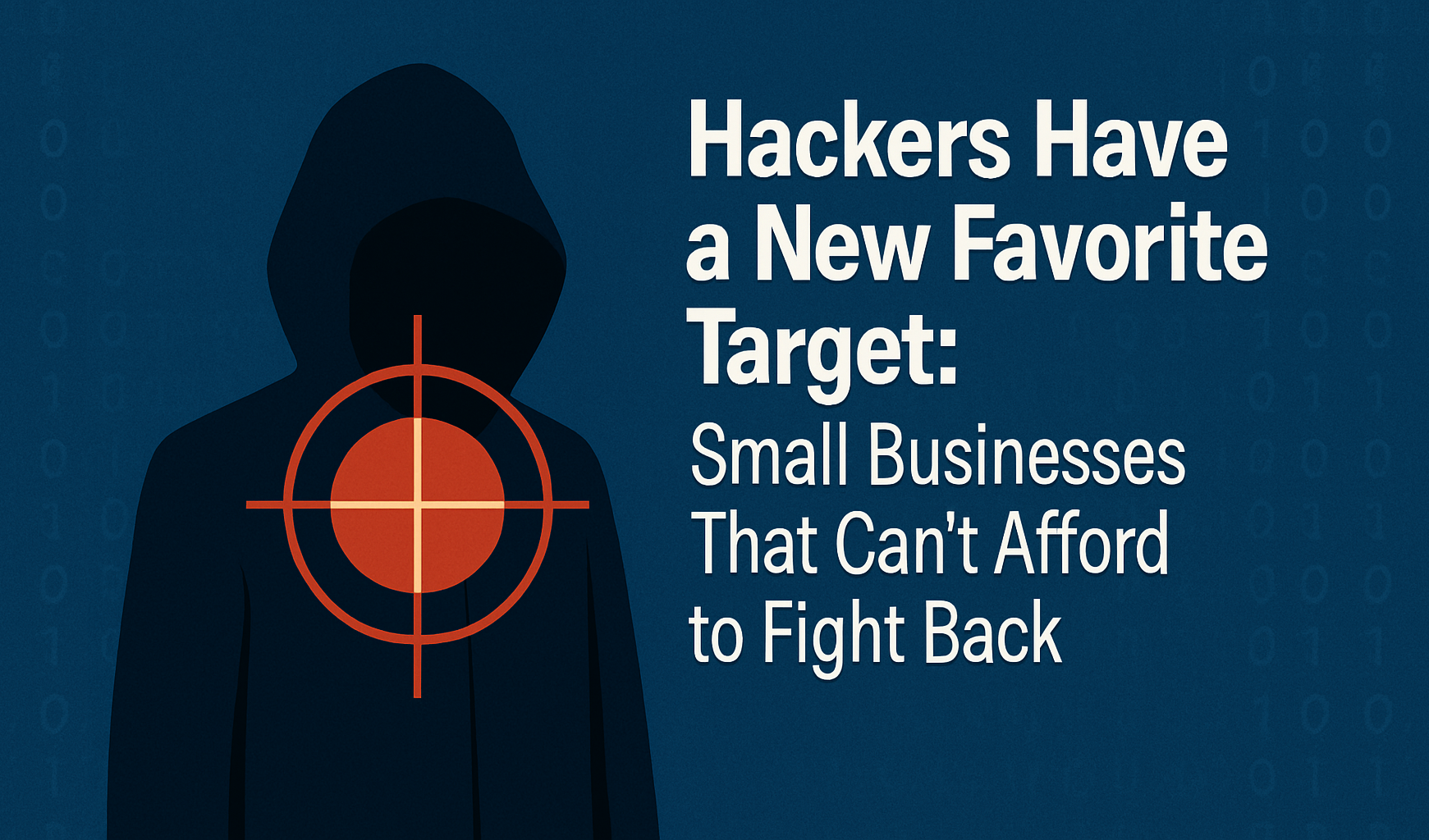Hackers Have a New Favorite Target: Small Businesses That Can't Afford to Fight Back
For years, small and medium-sized businesses have told themselves they were too small to be worth a hacker’s time. That illusion has officially expired. Cybercriminals have shifted their focus downstream, and small businesses are now at the center of a digital storm they were never built to weather.
According to Guardz’s 2025 Cyber Risk Report, attacks on small businesses nearly doubled this year. Ransomware groups, phishing syndicates, and data-theft operations are all targeting smaller firms because they know one painful truth: most don’t have the budget, staff, or systems to defend themselves.
What used to be an enterprise problem is now everyone’s problem.
Why the shift is happening
Attackers have figured out that breaching one large company can take months of work, while compromising ten smaller ones might take an afternoon. A single employee clicking a phishing link, a weak vendor password, or an unpatched software system can open the door to a complete takeover.
The average small business lacks dedicated cybersecurity staff, relying instead on general IT support or outsourced providers. And while enterprise-level firms are subject to stricter compliance frameworks, many SMBs don’t realize they still have obligations under laws like the FTC’s Safeguards Rule or state privacy acts. The result is a perfect storm of limited resources, limited awareness, and unlimited exposure.
The regulatory reality
Regulators aren’t giving smaller companies a pass. The Federal Trade Commission has made it clear that “reasonable security” is expected from any business that handles consumer data, no matter the size. State-level privacy laws, such as those in California, Colorado, and Virginia, extend data-protection requirements to firms that may not even realize they’re covered.
In short, being small no longer exempts you from compliance. If you collect personal data, process payments, or work with larger enterprises, you’re part of the chain, and the chain is only as strong as its weakest link.
The cost of complacency
The financial hit from a breach can be fatal. A 2025 IBM study found that the average cost of a data breach for small and mid-sized businesses now exceeds $3 million. But the real damage isn’t just monetary. Customers lose trust. Vendors cut ties. Insurance premiums skyrocket. For many, the reputational loss alone is enough to end the business.
Then there’s downtime. Most ransomware victims experience at least a week of halted operations. For a smaller company, that’s payroll missed, contracts breached, and clients lost. Hackers don’t need to steal your data to ruin you, they just need to stop you from working.
Why investing in GRC tools like C1Risk matters
The irony is that protecting a business does not require enterprise-level spending. A small, consistent investment in risk management software can prevent massive losses later. Platforms like C1Risk bring the kind of governance, risk, and compliance visibility once reserved for Fortune 500 companies to businesses of any size.
By centralizing risk assessments, automating compliance tracking, and mapping vendor dependencies, tools like C1Risk help leaders see where they are most vulnerable before a hacker does. Instead of reacting after the fact, companies can proactively identify weak controls, flag third-party exposures, and ensure regulatory alignment. For most small businesses, this level of visibility costs less than a single day of downtime, yet it can mean the difference between containment and collapse.
Where small businesses should start
Cybersecurity and compliance don’t have to be complex. They just have to be deliberate. Start with governance: make security a leadership issue, not an IT afterthought. Assign someone responsible for risk oversight and make it part of your business strategy.
From there, focus on three fundamentals:
Train your people. Most attacks start with human error. Regular phishing simulations and security awareness refreshers can cut that risk dramatically.
Patch and protect. Keep systems updated, use multi-factor authentication everywhere, and back up critical data offsite.
Know your vendors. Ask your IT and cloud providers how they secure your data. Demand breach-notification terms in contracts. A vendor’s mistake can become your liability.
Finally, test your resilience. Run tabletop exercises to simulate what you’d do if your systems went down or your data was leaked. Knowing how you’d respond under pressure can mean the difference between recovery and collapse.
Turning risk into resilience
Cybersecurity has become a business-continuity issue, not just a technical one. The companies that will survive the next wave of attacks will be those that treat risk management as part of their DNA, not a line item they revisit after something goes wrong.
Hackers know small businesses are vulnerable. Regulators know they’re unprepared. The question is whether small businesses themselves know it, and what they plan to do about it.
Because in 2025, being “too small to target” isn’t a defense. It’s a myth.

